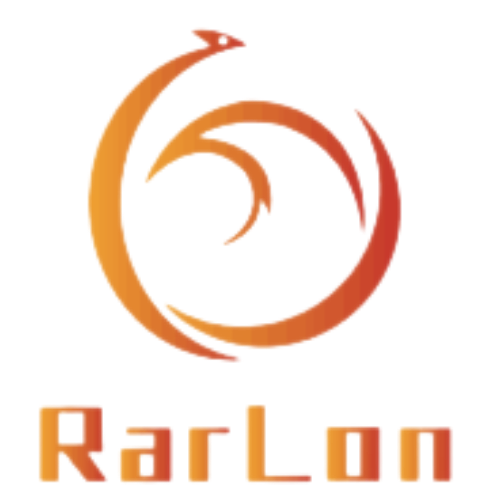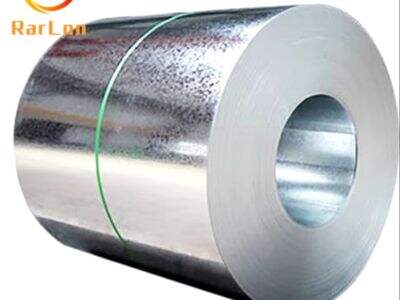«O qar topu paketi istifadə edilən isti çəkisli çelik rulonunda erir» ifadəsindən eşitmisinizmi? Belə, belə, belə deyil... Lakin nə səbəbdən olduğunu düşünürsünüzmü? Biz RARLON-da BÜTÜN İLLƏRİNİZ boyunca bu sualı araşdırırıq. Aşağıda sizə əsasları izah edəcəyik. Rustan olmayan Çelik Məhsulları kimi isti çəkisli çelik rulonlarının necə qar eritmə cihazı kimi işlədiyini və onların erimişliyini dayandırmaq üçün su akını ilə təsir etməyin neden işinə yaramadığını izah edirik. O halda bunun ardında ne məntiq var?
İsti Çəkisli Çelik Rulonları Necə Ala Bilərsiniz və Qar Toplarını Eritin
Ətiraf olun ki, istifadə etdiyimiz bir çox gündəlik əşyaların hazırlanmasında isti yuvarlanmış çelik spiralları böyük rolu oynayır. Onlar avtomobillər, ev təchizatları və hətta yaşayış və iş yerlərimiz olan binlər inşa edilməsində kömək edir. Bu spirallar istilikdən əvvəl layihələrə qarşı çevrilməz və sonra istilikdən keçirilir. Yuvarlanma prosesi özü maddəyə çox daha yüksək sertlik və dayanıqlılıq verir.
İndi özünə su varsa-da, yoxsa olmasa da, bu isti yuvarlanmış çelik spiralları necə yetişiklərə qarşı xətti dərəcədə istidir? Qeyri-rasmi, qədim tarixli lezzətlər və fındıq aromalarının sırrı? İsti yuvarlanmış çelik spirallarında olan karbon miqdarıdır. Karbon Polad Məhsulları çelik ilə əməl edilir, bu da çeliki çox sert və güclü edir. Spirallar soğukla qarşılaşdıqda, misal üçün qar kimi, onlar isti nəqliyyatını sürətlə aparır. Bu da digər xüsusiyyətlərə malik olmayan materiallardan daha az vaxtda qarın eritildiyini bildirir.
Su Sörfüxasyonunun Isı Qatlı Demir Üzərindəki Təsiri
Isı qatlı metallaşmış spiralin qatlanması və spiralin yuvarlanması ilə sonra, bu spiral su sörətdən keçirilərək məkanik sistemə daxil edilir. Bu da soğutma prosesində spiralların hələ də eyni şəkildə olmasından və demiri birləşmiş şəkildə almaqdan ibarətdir. Bu birləşmiş həddindən istifadə edilərək spirallar tələb olunan fərqli məhsulların hazırlanması üçün asanlıqla lentlənməyə və ya çevrilməyəcəkdir.
Amma su sörfüxasının qar çəkmək üçün daha yaxşı olduğuna inanırsınız? Aslında, onlar etmirlər. Çox qeyri-müəyyən deyil mi? Su sörfüxasi prosesi, qatlanmış spiralin xüsusi xarakteristikasına təsir etmir. polad spirallar hələ də sürətli istilik köçürməsini saxlayır - bu da spiralların donmuş qar topollarını anında eritməyə imkan verir, hətta soğuqda olsa dahi.
Qar Erkiləndirici Cəhizatının Stolp Destəyi
Qar topu eritmək səthi çoxluqda istifadə olunan əti yuvarlaqlaşdırma konuluqları qarşıdan daha yaxşı edir, lakin mən bunun əlavə bir şəkildə daha yaxşı olduğunu və yalnız bu deyil, qar topunu da eritə biləcəyini iddia edirəm: mürəkkəb. Mürəkkəb – bu, iki səth bir-biri ilə ürəkləndiyində yaranır. Uduşan səthi üzərində inkişaf edən və mürəkkəb yaradan qar topu yenidən uduşa başlayır. Yuvarlaqlaşdırılmış çelik konuluqları də nisbətən cərrah səthləri ilə xarakterizə olunur ki, bu da mürəkkəb səviyyəsini smooth səthlərdən daha yüksək edir. Və sizin gözlədiyiniz kimi, əlavə mürəkkəb o qar toplarının erilməsini təşviq edir.
Yuvarlaqlaşdırılmış Çelik Konuluqları
Beləliklə, indi qarşıya çıxabiləcək sualı işitdiniz: əgər istifadə edilən gərməli çelik rulonları qar topunu axırda etmək üçün böyük deyilsə və həyata keçirilməsi üçün heç bir üstünlüyü yoxdursa, necə də axırdığına mane olunur? Bunun səbəbi istiqaya köçürmə ilə bağlıdır. Gərməli çelik rulonları qar kimi çox soğuk bir cisələ hesab olunan cisələ toxunanda bu rulonlar sürətlə istiqayını itirir. Onların bunu nəzərə alınmış şəkildə etməyə cəhd etmələrinin əsas səbəbi onların iletisi istiqaya malik olmalarıdır və beləliklə qarı axırdırlar. Amma bu rulonlar istiqayını saxlaya bilirlər ki, bu da onların istədiyi temperaturaya yaxın olan obyektlərə yaxındırlar.
Gərməli Çelik Rulonlarının Qar Topunu Axırma Efiqi
Diğer sözlərlə, istifadə olunan temperatur xüsusiyyətləri və ısı xüsusiyyətləri ilə birlikdə, soğuq şəkildən keçirilmiş spiralların hər hansı biri, soğuyandə də, qar topunu eritməyə imkan verir. Evet, örnək olaraq, onlar ısını soyutmaqda yaxşıdırlar, lakin onların daha da böyük yarahılıqları isə, onların ətrafındakı nesnələrdən ısını saxlamaqdadır, bu da onların ondan ısı olan nesnələrlə yaxın temasda olduğu halda baş verir, amma bu nesnə qar deyil. Bundan əlavə, sıxışdırılmış səth strukturu səbəbindən, sürtmə konsentrasiyası daha yüksəkdir, bu da onların qar bloklarını eritməyə uyğunlaşdırır.
Adiyyətən, istifadə olunan istilikləşdirilmiş çelik rulonları haqqında məlumat toplamaçılıq çox çətin deyil və biz RARLON-da həmişə bu sahədə araşdırma etməkə dəvam edirik. Umid edirik ki, qar topuçularının eridilməsi məsələsinin gizli hesabını aydınlaşdırdıq və niyə su ilə onları xüsusi xassələrini dəyişmədən soxudaq总工会 biləcəyimizi izah etdik. Və əgər siz tələbə, müəllim və ya hətta elmi sahəyə maraqlı olan şəxs isə, bu məlumatlardan istifadə edə bilərsiniz və biz hamısı birgə ümid edirik ki, bu məlumatlarla heç biriniz keyif aldınız.

 EN
EN
 AR
AR
 HR
HR
 CS
CS
 DA
DA
 NL
NL
 FI
FI
 FR
FR
 DE
DE
 EL
EL
 IT
IT
 JA
JA
 KO
KO
 NO
NO
 PL
PL
 PT
PT
 RU
RU
 ES
ES
 TL
TL
 ID
ID
 SR
SR
 SK
SK
 UK
UK
 VI
VI
 SQ
SQ
 HU
HU
 MT
MT
 TH
TH
 TR
TR
 FA
FA
 MS
MS
 MK
MK
 HY
HY
 AZ
AZ
 KM
KM
 LA
LA
 MN
MN
 MY
MY
 KK
KK
 UZ
UZ

